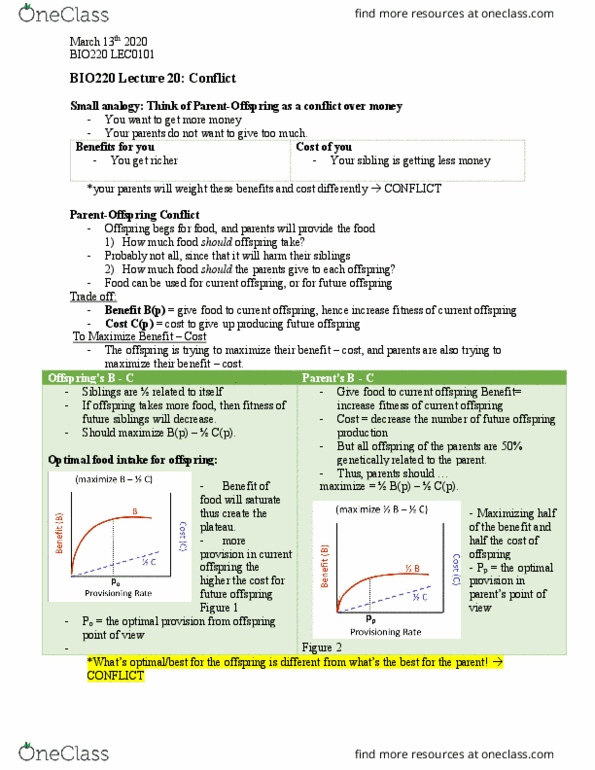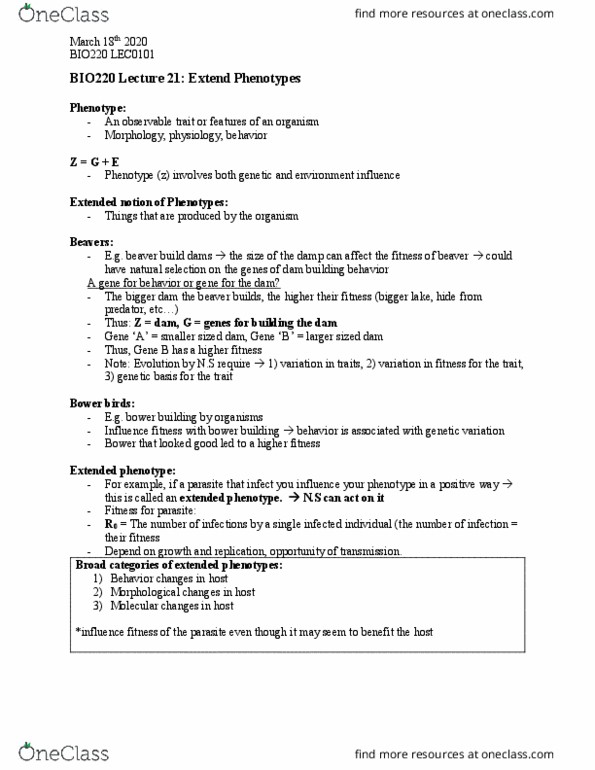BIO220H1 Lecture 21: Extended phenotypes
BIO220H1 verified notes
21/26View all
Document Summary
An observable trait or features of an organism. Phenotype (z) involves both genetic and environment influence. Things that are produced by the organism. E. g. beaver build dams the size of the damp can affect the fitness of beaver could have natural selection on the genes of dam building behavior. The bigger dam the beaver builds, the higher their fitness (bigger lake, hide from predator, etc ) Thus: z = dam, g = genes for building the dam. Gene a" = smaller sized dam, gene b" = larger sized dam. Thus, gene b has a higher fitness. Note: evolution by n. s require 1) variation in traits, 2) variation in fitness for the trait: genetic basis for the trait. Bower that looked good led to a higher fitness. Influence fitness with bower building behavior is associated with genetic variation. For example, if a parasite that infect you influence your phenotype in a positive way this is called an extended phenotype.




